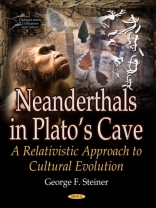The ABCs of human "modernity" – anatomical, behavioral and cognitive – behaviors are believed to have appeared "suddenly" during the Upper Paleolithic era. Since then, according to mainstream paleoanthropology, our biological evolution came to a halt and the human condition became solely defined by cultural evolution. Unfortunately, most models of cultural evolution strive to conform to this prevalent understanding. With the notable exception of dual inheritance theory (DIT), the obvious fact that for the last 50 millennia cultural evolution has had a marked impact on our anatomy, behavior and cognition was recognized. DIT, when placed within the conceptual space of niche construction theory, becomes a realistic theory of culture. However, even in DIT, the clock of "cumulative cultural evolution" is set back to the Upper Paleolithic era. Moreover, DIT suggests that cumulative cultural evolution is the "natural choice" of all behaviorally/cognitively modern humans. DIT starts with the presumption that technological innovation is the index of cultural progress, and that the "ratcheting" of innovations becomes the main "goal" of a cumulative cultural evolution. This is accomplished by developing a certain degree of social complexity, in which social learning and the biased copying of cultural models become the mechanisms of cultural transmission. Small and isolated populations are "doomed", and the "treadmill model" takes effect, in which the lack of demographic strength results in impaired social learning and loss/infidelity in copying. However, the anthropological literature documents small and isolated groups that have – despite these "handicaps" – developed intricate social networks that do not necessarily rely on technological exchange and function only in low demographical settings. Not only are the parameters upon which biased cultural transmission is based in DIT – prestige, skills, success – unknown, but certain "leveling mechanisms" ensure that these parameters become eliminated, and thus no cultural models can rise to prominence. Interestingly, these societies do not seem to be plagued by cultural loss and, instead of hopelessly running the treadmill and living in poverty, they have developed egalitarian and, to an extent, affluent societies. Last, but not least, the cultural evolution of these groups does apparently not rely on accumulation, but rather on reduction. If the onset of cumulative cultural evolution is dated to and equated with the Late Pleistocene version of "modernity" and suggested to be the "natural choice" of all "moderns", then the very modernity of populations that do not follow it becomes questioned.
George F Steiner
Neanderthals in Plato’s Cave [PDF ebook]
A Relativistic Approach to Cultural Evolution
Neanderthals in Plato’s Cave [PDF ebook]
A Relativistic Approach to Cultural Evolution
Cumpărați această carte electronică și primiți încă 1 GRATUIT!
Format PDF ● Pagini 245 ● ISBN 9781536119602 ● Editor George F Steiner ● Editura Nova Science Publishers, Inc. ● Publicat 2017 ● Descărcabil 3 ori ● Valută EUR ● ID 6890151 ● Protecție împotriva copiilor Adobe DRM
Necesită un cititor de ebook capabil de DRM












